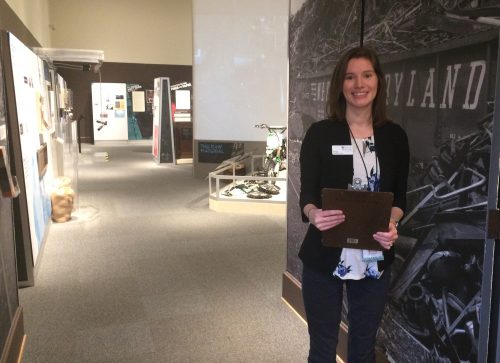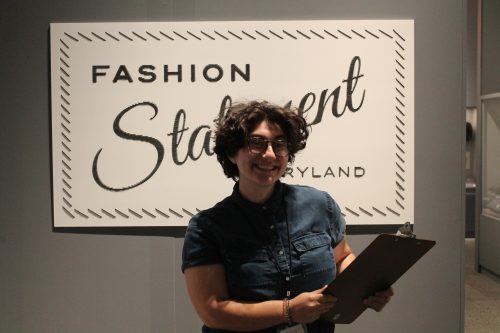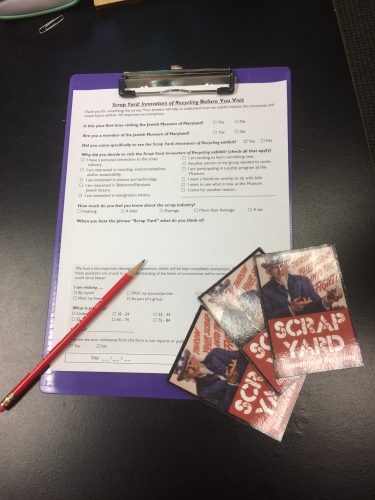The Value of Our Visitors’ Voices

In this month’s Performance Counts, Paige Woodhouse gives a behind-the-scenes look at one of the most important ways we evaluate our work. To read more posts from Paige, click here!

Often in Performance Counts we look at the data – the numbers. Tracie Guy-Decker shared in Quantitively and Qualitatively Measuring the Museum and Measuring Memory, Nurturing Upstanders about how data is an important tool for evaluating how we, as a museum, are doing. For this Performance Counts, let’s take a behind-the-scenes look at how we the develop tools to collect data and measure the Museum from the visitor’s point of view.
After an exhibit, our team gets together to discuss the project. We look back at our goals for the exhibit and measure how we did. What were our successes? Where are opportunities for us to improve? Were there any unexpected outcomes? There are lots of perspectives from different departments represented in these meetings – programs, education, curatorial, to name a few. But there is one voice, which is the most valuable, that can’t be left out. That’s your voice. The visitor’s voice.
For Scrap Yard: Innovators of Recycling, we want to hear from you about your experience of our new original exhibit. We created a survey as a tool to collect this data. Planning began months ago when Fashion Statement was still on display. There were five steps to this project:
(1) Establish Goals. What did we want to achieve with the survey? Originally, we want to see if visitors were taking away what we consider to be the main themes of the exhibit. We also want to learn about people’s overall experience of the exhibit. Following piloting our questions, we added one more goal – to learn what motivated people to see the exhibit.
(2) Develop Questions. There are many ways to ask a question. There are some best practices to question writing too. We learned that it is better to keep our questions simple and to avoid museum jargon/terminology (When talking about the things you can do in the exhibit, “Hands-on Activity” is better than “Interactive”).

(3) Pilot Questions. We piloted our survey during the Fashion Statement exhibit. Our great team of summer interns took turns asking visitors to complete a survey for a complimentary gift. We collected 36 surveys. This wasn’t enough data to foster meaningful insight about the Fashion Statement exhibit, but it was enough to see which questions were working and which were falling flat.
(4) Re-Evaluate Questions. After analyzing the data collected during our pilot, we made a few changes to our questions. For example, we asked visitors “How much do you feel you know about fashion history in Maryland” and provided them a scale from one to ten. When looking at the data, the responses were vague (what does a 4 mean?). We changed the question to be “How much do you feel you know about the scrap industry before visiting the exhibit?” We ask visitors to circle one of the following options: nothing, a little, average, more than average, a lot. These responses are more clearly defined.

(5) Implement Survey. This brings us to the present. Since the opening of Scrap Yard on October 27th, our team has been asking visitors to complete a survey at the end of their visit. To date, we have collected 105 surveys. These surveys provide you, our visitor, with a voice. They give you a chance to tell us about yourself and why you chose to visit. You can tell us what you liked, what you weren’t so keen on, and what you learned.
This process doesn’t end at step five. After the exhibit ends, we will analyze the data, interpret it, and apply what we have learned. After all, evaluation is about learning. These surveys are another tool for us to collect data and measure we are doing, celebrate successes, and make improvements. It also reinforces the person behind the number. The stories shared, the connections made, and the actions taken.
Not yet a member – or know someone who you think should join the family?
Share this link and help grow the family today!
